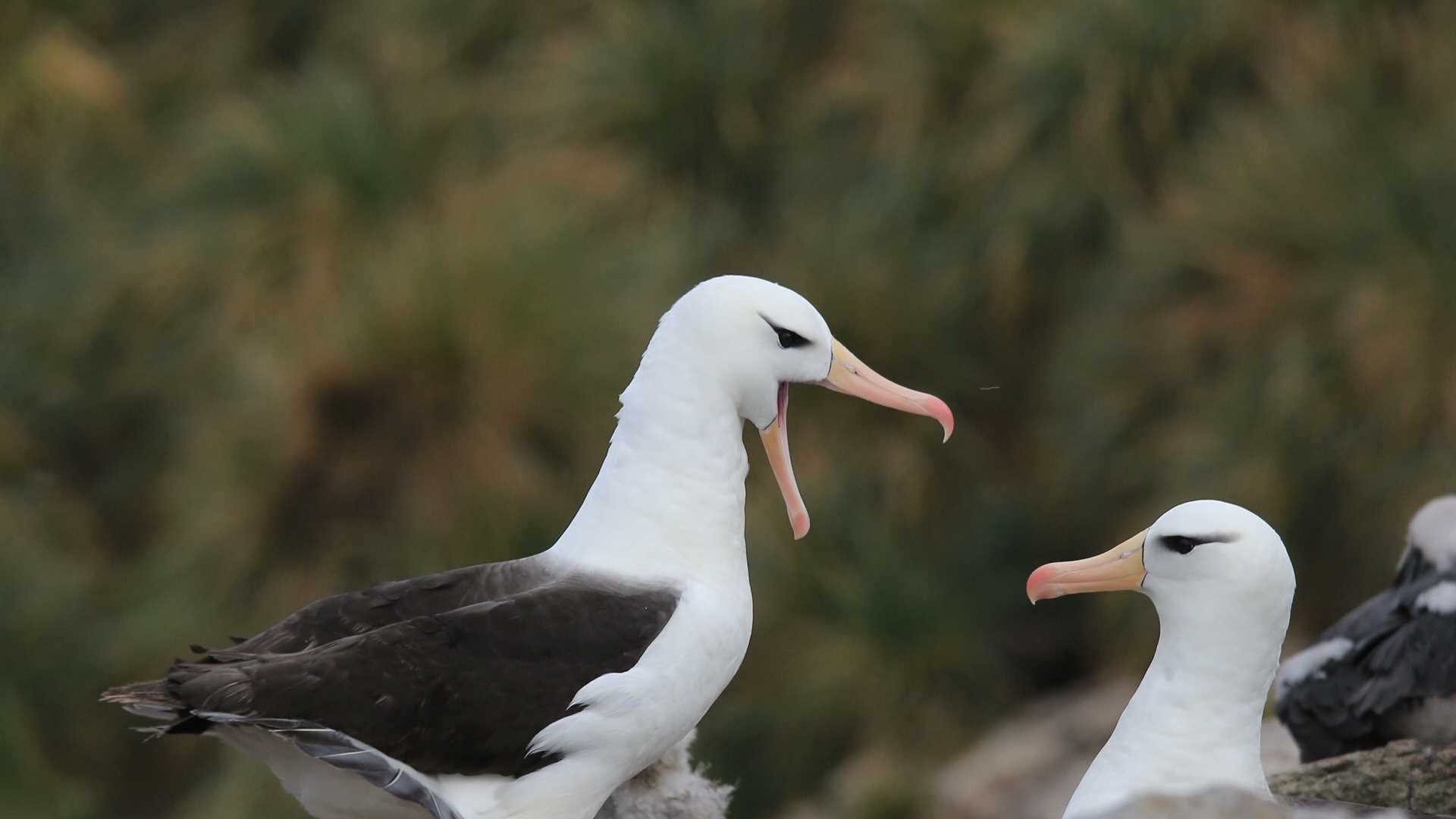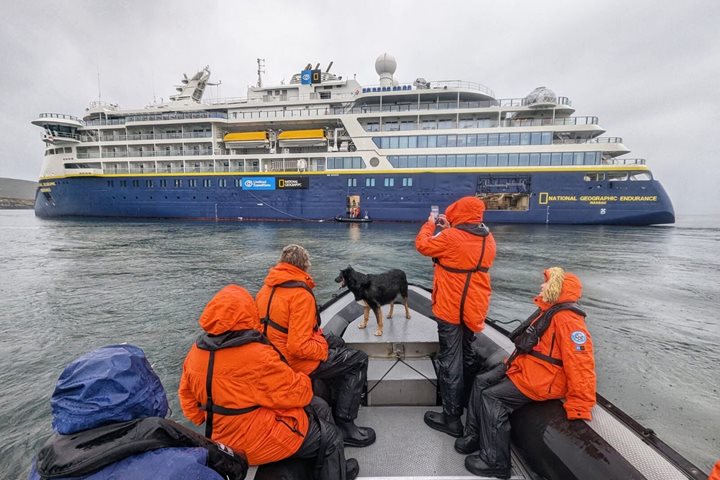Today’s destination was the New Island group, a series of nine islands found in the southwest of the Falkland Islands. The largest of the group is New Island, surrounded by eight smaller islands. This group is monitored and managed by the Falkland Islands Conservation group, which is largely supported by tourism operations. Through continued protection, this wildlife haven has attracted large numbers of a variety of species, eventually leading to it being classified as a Key Biodiversity Area (KBA). Fortunately, this is a stark contrast to the island’s early history of whaling and habitat destruction.
After breakfast, guests departed for shore in Zodiacs, arriving on the white sandy beaches of New Island. We hiked a short distance across the island to access a large rockhopper penguin colony and a thriving black-browed albatross colony. Upon arrival, two macaroni penguins were discovered at the base of the colony. We enjoyed the sunshine and a little wind as we perused the colony and took in the cliffside views. After returning to the beach, guests visited a small museum and gift shop supported by New Islanders. The museum was originally erected on the site of a rough stone shelter built by a shipwrecked captain and his four crew members. Several ongoing scientific projects are underway on the island. The projects focus on several species, including gentoo penguins, white-chinned petrels, Falkland skuas, imperial cormorants, Upland geese, and striated caracaras. After leaving the island for lunch, National Geographic Explorer departed for Ushuaia. We enjoyed several afternoon presentations from the naturalists before the evening got underway.







